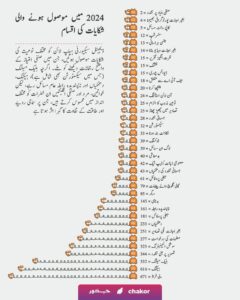Pakistan’s Alarming Rise in Online Gender-Based Violence in 2024

As Pakistan embraces digital growth, a parallel, more sinister reality unfolds: women, youth, and minorities are increasingly at risk in the very spaces meant to empower them.
In its eighth annual report released Thursday, the Digital Rights Foundation (DRF) sounded a stark warning: 3,171 cases of technology-facilitated gender-based violence (TFGBV) were reported across the country in 2024 , an unprecedented rise that highlights how societal protections continue to lag behind technological advancement.
“While we celebrate internet penetration, we must also confront its dark side,” said Nighat Dad, Executive Director of DRF. “Trust, safety, and digital security are deeply contextual , they cannot be automated or outsourced.”

Women Under Siege: Online and Offline
Despite improvements in education, women across age groups and classes continue to face widespread sexual, mental, and physical abuse. A 2023 UNFPA report reinforced this grim reality, noting a systemic failure to protect women.
In the digital realm, the DRF report revealed that 1,772 cases in 2024 were reported by women — making them the primary targets , compared to 1,365 cases by men. The dangers, however, were not just limited to adults: there was an alarming 51% jump in TFGBV cases involving children and youth under 18 compared to 2023.
Notably, the 18–30 age group remained the most targeted demographic, making up 1,774 complaints.
Where the Threats Come From
-
Cyber harassment remained the most reported category, with 2,741 cases recorded.
-
Women were overwhelmingly targeted through non-consensual intimate images (NCII) and image-based abuse (IBA) — 85% of NCII cases and 81% of IBA cases involved women, often aimed at coercion, blackmail, or reputational destruction.
-
Vulnerable professions and communities like journalists and minorities faced serious threats too: 121 cases involved attacks on journalists, while 124 cases involved religious and gender minorities.
The majority of perpetrators were male (673 cases), with ex-husbands and ex-partners responsible in a disturbing number of instances (218 cases). Family members were harassers in 48 cases.
Even more troubling, strangers and unknown individuals accounted for a major share of attacks, enabled by the anonymity of digital platforms.

Geographic Hotspots of Online Harassment
Punjab topped the charts with 2,277 cases, reflecting both the province’s massive population and greater awareness of DRF’s Helpline. Sindh followed with 301 cases.
However, only 36% of harassment cases originated from cities where the FIA cybercrime wing is operational — a sobering statistic that points to serious gaps in access to justice, particularly in remote areas.
“Survivors face considerable logistical, financial, and cultural barriers in seeking redressal,” the DRF stressed. “For women survivors, these challenges are even steeper.”
Peak Months of Panic
-
May 2024 recorded the highest number of cases: 386 complaints.
-
March (312 complaints) and July (354 complaints) also saw surges, coinciding with political upheaval and a rise in gendered disinformation campaigns, particularly against women politicians and journalists.
The DRF also reported an alarming increase in AI-generated deepfake abuses, especially targeting women in public life, a new technological tool weaponized to humiliate and discredit.

A Broken System: Conviction Rates Tell a Grim Tale
Parallel data from the Sustainable Social Development Organisation’s Mapping GBV 2024 report paints an equally devastating picture:
-
In Punjab, of 1,167 domestic violence cases, only three convictions were recorded.
-
Khyber Pakhtunkhwa saw 446 domestic violence cases, but no convictions.
-
Sindh reported 375 domestic violence cases—again, zero convictions.
-
Balochistan, despite its small size, achieved 25 convictions out of 160 cases, making it the rare exception.
These numbers expose a justice system ill-equipped to deliver accountability, let alone deterrence.
State and Tech Platforms: Missing in Action
DRF’s Nighat Dad called out the negligence of tech companies and state institutions alike:
“Tech companies must recognize that cultural nuance, emotional intelligence, and lived experience cannot be programmed. Cost-cutting at the expense of human safety is unacceptable.”
Meanwhile, Hyra Basit, DRF’s Helpline Manager, stressed that vulnerable groups, including women journalists and activists, often have no institutional protection, making the Helpline’s role “ever more critical.”
In 2024, DRF intervened with major tech platforms like Meta, TikTok, and X through 197 content escalations— but inconsistent responses and cultural blindness from tech companies still put countless lives at risk.
The Way Forward: What Needs to Change
DRF’s powerful set of recommendations urges:
-
Consistency in PECA legislation without abrupt structural changes.
-
Massive investment in digital literacy programs to tackle TFGBV at its roots.
-
Closing the digital gender divide, with women still 35% less likely than men to own mobile phones.
-
Gender-sensitive training for law enforcement agencies.
-
Strengthened data protection laws to safeguard privacy and digital rights.
-
Real financial and technical empowerment of cybercrime units to better support survivors.
Moreover, recommendations for law enforcement include building survivor-centered systems, implementing case tracking mechanisms, and offering psychological support to complainants.


